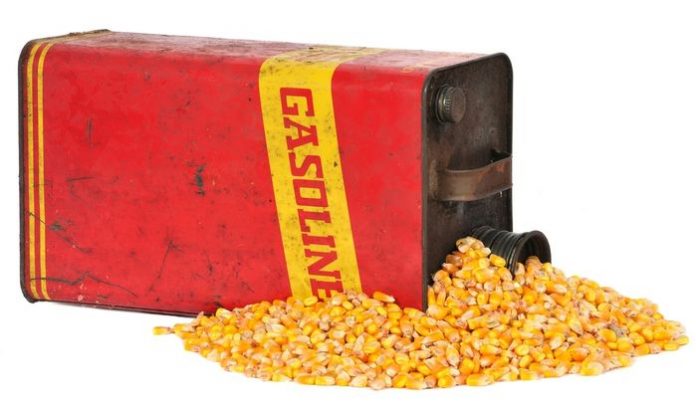Most people don’t realize it, but what they’re pumping into their car’s tank isn’t actually gasoline, properly speaking. It’s gasoline mixed with ethanol alcohol – the ratio currently set at 10 percent ethanol and 90 percent gas (E10).
“Diesel” often isn’t exactly diesel, either.
The real stuff – the petroleum-based stuff – is mixed with bio-diesel, which is derived (like ethanol) from non-petroleum sources, usually vegetable matter.
The market isn’t demanding this – but the government is.
There is a law called the Renewable Fuel Standard. It requires the “blending” of oceans of corn con ethanol and biodiesel boondoggle into the general fuel supply – ostensibly, to reduce America’s dependence on foreign (and non-renewable) oil.
Like so much that government does, it sounds good – but what it actually doesisn’t so good.
The RFS has raised refining and distribution costs as well as the cost to motorists, who not only pay more for the Uncle-adulterated fuel but also for the fuel systems in their vehicles, which have had to be modified to be compatible with the not-quite-gas (and sort-of diesel) fuels the government is pushing.
These adulterated fuels are also – ironically – less efficient. A gallon of pure gas will take you farther than a gallon of 90 percent gas and 10 percent ethanol because the gallon of gas contains more energy than a gallon of E10.
As is almost reflexively true of everything the government mandates, we get less – and pay more for it.
But that doesn’t mean someone’s not making a buck – as is also usually true when government intervenes in the market.
In addition to the Usual Suspects – the ethanol lobby, for instance – there is a another group of crony capitalists making hay off the RFS mandate. These are the large refiners and chain gas stations, who can leverage – in the lingo of the federal bureaucracy – Renewable Volume Obligation (RVO) credits to gain an unfair competitive advantage over smaller refiners and independent gas stations.
…click on the above link to read the rest of the article…
